(first posted 8/14/2012) Kids: Want to know how we (once) pre-teens and teens spent the way-too-much free time we had back in the electronic dark ages of a half-century or so ago? We read books. The classics, of course, like the famous J.C. Whitney Automotive Accessory and Parts Book (J.C. deliberately called it a book in order to let us tell our parents we were indeed reading a “book”– as though they really cared then, before the invention of helicopter parents). Now, one simply didn’t read a JC W book cover-to-cover or randomly, without some higher purpose; no, we exercised our developing minds by using this book in a very specific manner, kind of like an app.
Before even opening it, you had to pick a certain make, year and model of car that, for some inexplicable reason, was of intense interest to you– and no,not a new one; that didn’t really work. You’d pretend that at the age of 12, you somehow had the requisite amounts of money and legitimacy to buy a used car. We were modest back then; after all, this was long before Lamborghini Countach posters became the wallpaper of choice in the ’80s.
For instance: Around 1965, one of my favorite subjects for this exercise was a 1961 Chevrolet Impala two-door sedan with a four-barrel 283 V8 and four-speed stick. Why that particular car? Well, the 12-year-old mind is a mysterious thing, but let’s say that among its virtues was that it was highly unusual; in fact, it was the only two-door Impala sedan ever made. Whether one could have talked a Chevy dealer into ordering it with the four-speed is another question, but one not relevant to our topic.
Having the object of one’s MMing (MM = Mental Masturbation, for you latecomers) session firmly in mind, you then opened the latest edition of the “book”, and began the grueling mental task of deciding exactly what to “buy” for your recently acquired car. A custom grille, perhaps? Hmmm; the ’61 Chevy’s is pretty clean, so no thanks. Next page. Camshaft? Yes. Engine dress-up kits? Yes. Kleenex dispenser? Not just yet.
It’s important that those of you born after the JCW golden era understand the real legitimacy of calling these catalogs “books”. They were substantial, and offered virtually any and every part or accessory even the most crazed MM addict could want or imagine–everything from pipe-organ speakers, to complete engines (taken from Chicago’s many wrecking yards, I assume) that opened up all sorts of possibilities for engine swapping.
How about a 392 Hemi in a Jeep CJ2? Why not? More than likely, JC even had the adapter kit so that the MM session rules need not be violated. Obviously, I was raised Catholic.
Anything and everything one could dream of that even vaguely related to use in, with, or on an automobile was in the pages of this holy book. Yes, an Emergency Oxygen Unit! (upper left on right page). My 1956 DeSoto definitely needs that. An Auto Shaver (upper left on left page)? Well, of course! I can practically feel my beard growing at the very sight of it. It’ll look fine on the dash of my 1961 Falcon Futura, and really impress the girls.
Or how about placing Winky the Safety Cat on the rear parcel shelf of a 1953 Starlight Coupe? And don’t forget replacement bulbs…they might be hard to come by locally. Then again, maybe too girly? Pass.
JC Whitney books would just appear mysteriously; I really don’t recall from where. Sometimes I’d stumble into an older one, perhaps left behind by the former owners of our house. Let’s see….shall we do a 1949 Olds 88 fastback coupe with ratty upholstery? Supreme Woven Saran Plastic or Supreme Melostrength Fibre?
After starting a south Chicago scrap yard in 1915, Lithuanian immigrant Israel Warshowsky soon began buying parts inventories from failed auto makers. In 1934, his university-educated son, Roy, joined the firm with expansion in mind, and placed an ad in Popular Mechanics offering a “huge parts catalog” for 25 cents,with the name JC Whitney on the cover. The rest is history.
And Roy was quick to embrace the changing taste of car buyers, and set aside a whole section to VW and other popular import brands. I remember the Renault Dauphine section vividly, and even had an MM session with one, maybe even more than once, perhaps.
But the VW section quickly became one of my favorites, and I would endlessly agonize over exactly which size Big Bore Cylinder kit to buy for my 1964 VW 1200…whoa! Fantasy meets reality! In 1973, I really did have a ’64 VW, and now the JCW book took on new meaning. But not necessarily in the best way. Now I actually had to send in money, and the stuff that came back had a decidedly cheap feel to it. Kinda ruined the whole MMing experience.
JC was a pioneer in finding cheap sources for their parts, like Brazil and Mexico and such (Update: Japan too, back when “Made In Japan” had a very different connotation), or just junky US made stuff; they were ahead of their time. I bought some tune-up parts and such, and a black vinyl cover for the spare tire that had lots of pockets in it for holding tools and the Emergency Oxygen Kit and such. I loved that, and made sure it moved on to my other VWs; channeling my inner Kraut. But pretty soon, JC Whitney went the way of so many other childhood fantasies that were so rudely popped.
But now that I’m old and losing my grip on reality; we’ll let’s just say it’s probably fortunate that I’m limited in what I can show you to the few random scans out there on the interwebs (thank you all), but it’s just as well, because if I actually had a 1965 JC Whitney book, I wouldn’t be writing about it; I’d be having a hell of an MM session right now. Let’s see…a 1962 Dodge Lancer hardtop coupe…














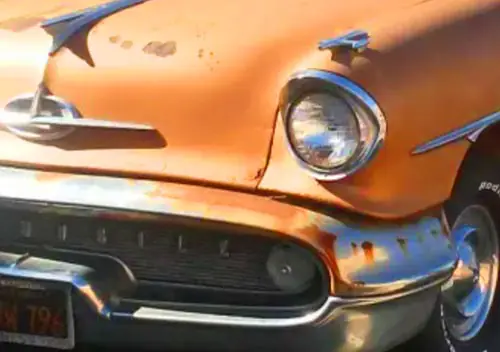
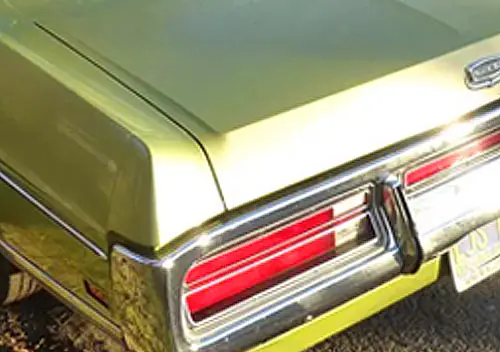
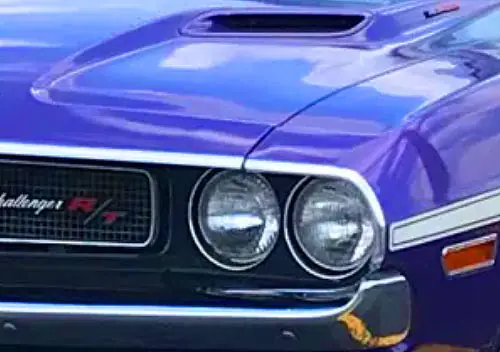


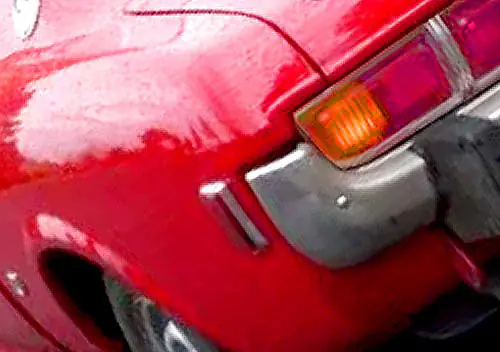
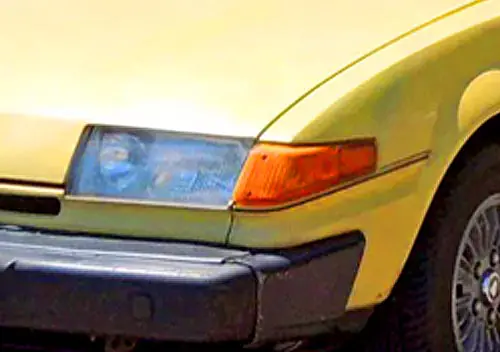

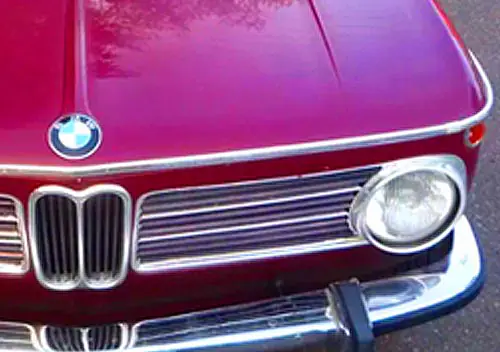
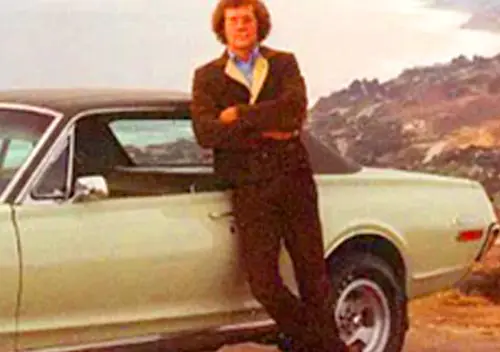
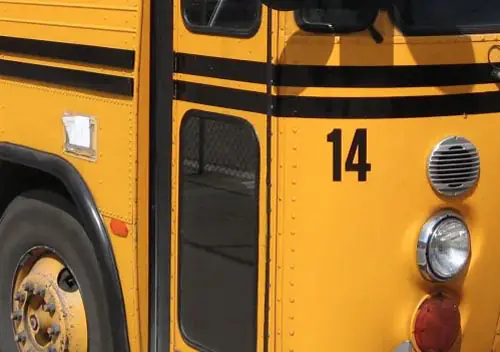
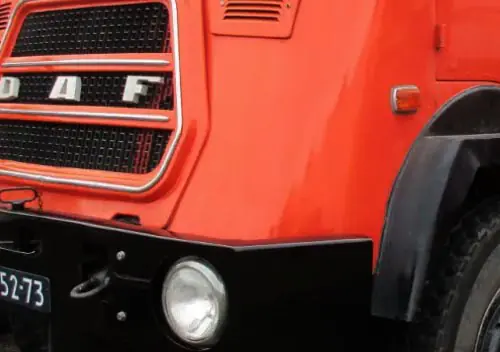
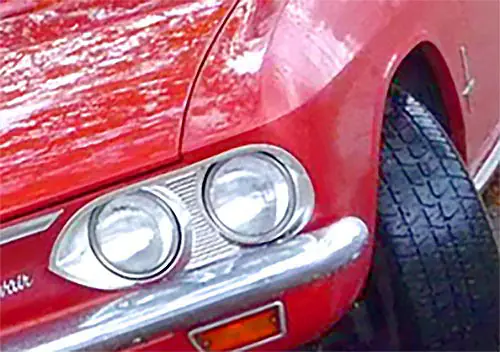
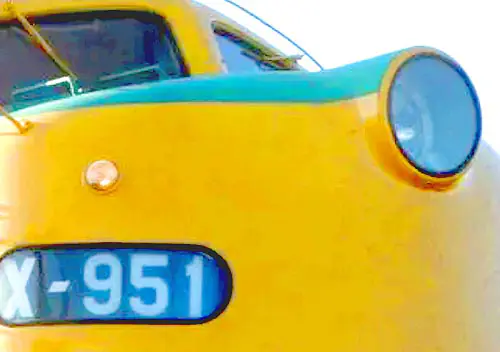
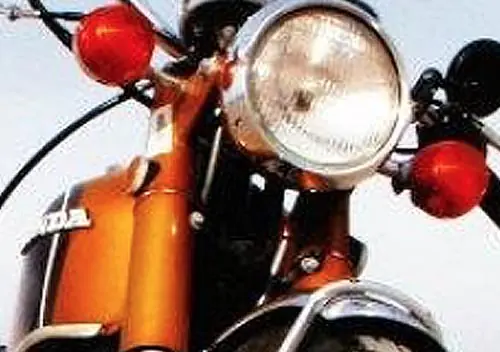
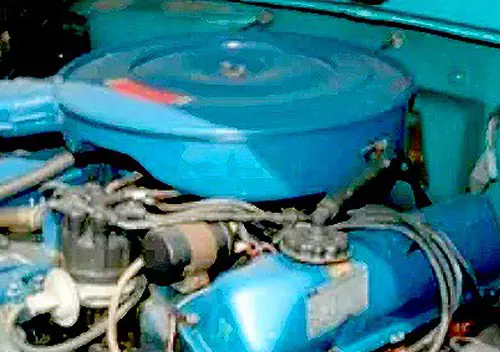

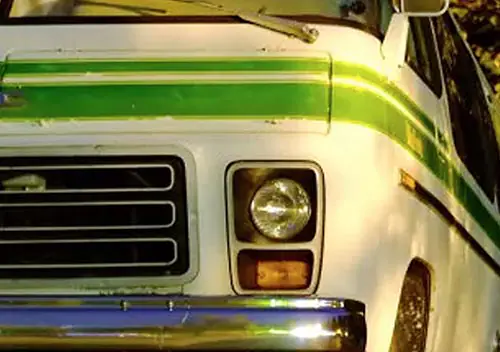

Paul: Thanks! Brings back many wonderful memories. Since my father had an auto parts store, we actually sold many of the items listed in the book, such as Winky! I remember helping customers find the appropriate lynx eye (blue insert) tail light lenses for their Chevys , Fords, etc.
This was my favorite catalog when I was a kid. The real treat was going to the State St Whitney/Warshawski store for the Clearance Center and the “Car Museum”, when you were done there you could run across the street to Blue Star Auto parts too..
It’s just not the same since they moved to LaSalle, but the JCW annual Car Show is pretty cool.
I used to love the J.C. Whitney catalogs! I bought parts from them for my ’32 Buick, and my Corvairs, and even the parts to overhaul the 100E engine in my Anglia!
My second car was that Chevy 2 door sedan – in Bel-Air trim, 235 6 cyl. stick!
I don’t know which invoked more lust: The JC Whitney catalog or Honest Charlie’s catalog.
For laughs, you had to read Honest Charlie. For everything else, it was JCW. If you wanted to dream, read HOT ROD magazine, where they led you step-by-step in a massive engine rebuild/modification, and dreamt who in the world among kids had the money to do any of that stuff, as our reality as teenagers was where to get the 25¢ for a gallon of gas, only coming to the realization that the magazine was targeting 20-somethings who either avoided the draft, had jobs or lived in SoCal and whose daddy financed their car fantasies. Really made us angry, too…
All we had, speaking for myself and my best buddies, and could afford were worn-out rust-bucket bombs that we made do with and kept the auto parts stores in business buying body putty and primer and trolling junkyards looking for usable parts and body panels that were less rusted but more fixable than the ones on our cars!
That, and finding an extra dollar and enjoying three hamburgers, an order of fries and a small Coke for about 95¢ at McDonald’s back in 1968 and 1969.
One thing about those seat covers: They looked nice when you put them on, but if the current bench seat was already split where the side bolster met the main fabric as they often were, a new cover lasted exactly three days before it too, split!
Hot Rod was for MM, Car Craft was for people who actually wanted to learn how to upgrade their car’s performance on a real-life budget.
Good gravy! What a trip back. I knew the Jeep and Beetle sections all through…actually bought the wood panel inserts for my Super Beetle (they weren’t drilled properly; and fixing it messed up the appearance).
It was partly how I learned what changes happened when, back before the Wiki resources.
I was wondering what happened to them…I’d heard they were still around a few years ago, but were charging for their much-smaller book. QUESTION: How did Warshawsky appropriate the name “Whitney”? I know they did business under both names; but was Whitney a competitor who sold out?
Roy Warshawsky created that name when he decided to go national with an ad in Pop Mech. But locally, it was already well established as Warshawsky, Dual identities, regionally and nationally. The first time I stumbled into a Warshawsky book, it was like, Whoa; did I lose my mind? exactly the same, except for the name.
This sort of name-playing is not just a thing of the past. “The Sopranos” was created by David “Chase,” aka DeCesare. And Jon Stewart is probably not Scottish.
You are describing my young teenaged life. At one point, I was obsessed by the well worn 52 Chevy Styleline Deluxe 2 door sedan owned by a relative. The car was pure beater but I was sure that I could save up the money and buy it. It would be no trick at all to restore to its former glory, I was sure of it.
Somehow I got my first J.C.Whitney catalog and did just as you descibed. I still remember agonizing over whether to go with the gray headliner or the taupe one. Educational, too – that was where I learned what “taupe” was.
I am sure glad that I don’t have one of those right now too. I have too many other things to do.
Ditto here… I used to jump directly to the VW, Jeep and Model A sections as a kid… I wasn’t really playing the game like you were – it was just cool to see all the neat-o stuff you could buy for your car. One of these days I need to stop at their HQ / distribution facility on I-80 – it’s maybe 1.5 hours from here.
What’s funny (or not) is that I’m currently having an old-school hot rod 40hp engine built up for my ’62 Sunroof Beetle – and parts are getting pretty hard to track down. I have to confess that JC Whitney is *not* one of the resources I’ve been looking at, either.
Im trying to find hot up parts for my Hillman Im looking at getting a tyre melting 75hp to go with the high speed back axle ratio I scored
Dang, Ed, could have picked you up a brand new, still in the box 40HP big-bore kit for $60 at the Portland Bug-In 2 weeks ago!
Well I’m set on the jugs at this point – trying to line up a counterweighted crank for a 40 horse, however, is a horse of another color, apparently!
(and don’t get me started on finding a nice looking aftermarket exhaust system with a little tone, but still with dual tubes that exit in the stock location – they make several nice ones for 1600-based engines)
Wow – I used to do this exact same thing in the 1970s. Our family never owned any air-cooled VWs, but I would pick a model and spend hours deciding what hop-up parts I was going to put on it.
In 7th grade, my dad bought me a 1941 Chevrolet Special Deluxe 4-door sedan for $250 (non-running of course, and it had last been licensed 7 years prior) and I actually did order parts for that out of the catalog. The parts were of poor quality and made offshore (I remember ordering headlight bezels and rocker molding trim, and the “chrome” was so thin and poorly-plated that I didn’t even want to install the parts). I also specifically remember that they sold USED engines as well (sourced from junkyards?).
And I remember Winky the White Cat too – I really wanted to get one of those!
“The parts were of poor quality and made offshore…”
Ha ha ha! Back then, they were “Made in Japan”!
I didn’t like the Winky cat – I wanted the bobble-head dog that sat on the rear shelf that nodded at those behind you…
Japan; right; how quickly we forget!
My uncle was in the US Navy on an LST in WWII. As the Christmas lights on his tree burnt out he would not replace them as the only source was Japan!
Yes times have changed.
Dave
Yeah, the Warshowsky catalog (I was a Chicago boy). A friend (living in Minneapolis) actually bought the “Fire Injector” spark plugs for his ’68 GTO. A bit too hot–he got a hole in a piston. I reserved the book for MM, myself. Allied Radio, they got a bunch of my money, but that’s another topic.
“We were modest back then; after all, this was long before Lamborghini Countach posters became the wallpaper of choice in the ’80s.”
Ha! Got one of those for my 15th, 1988, shrink-wrapped to a piece of white corrugated, which was de rigueur for the very best in cheap 80s posters. I distinctly remember my grampa, who’d run a gas station from the 30s-50s, holding up the thing at my party and saying, “Wellp. Can’t afford it.”
And my favorite JCW item (that I never bought) was the “diesel air horn sound” horn, which was just what my Plymouth Horizon needed.
I wanted a “Dukes of Hazzard” ‘Dixie’ horn *so* bad in high school… was perfectly jealous when another student got one for his ride. I had to resort to a CB radio with remote speaker instead – I could do a passable police siren, had fun with that more than once!
I went to school just south of the JC Whitney/Warshawsky store on what I thought was S. Michigan Ave. First thing you did once you entered the store was to take a number from a dispenser, check its color, and look up to a big board that told you what color they were on. Another lighted sign showed what number was up next. It was generally a couple-hour wait. So you would go out and do other stuff until 15 min or so before your number came up. One time while waiting in line, a rattine-faced individual asked me if I wanted to buy a Ford 427. My jerk-knee reaction was “hell yah”, but I demurred not having a vehicle that would accommodate a 427. I bought Eelco fast ratio steering arms for my Corvair–good quality, worked as advertized, and a glass-pak dual exhaust system. It fit after a fashion and was on the car when I sold it.
During WWII my uncle was at the store when somebody came up to him while he was in line and asked him what he was looking for. My uncle named an engine for one of his trucks. A price was agreed upon and my uncle was told to meet the seller an hour later. When my uncle loaded the engine into the bed of his truck it was still warm.
I never did have a need for their “Engine Rebuild Tablets” nor the spark plugs that fire in oil. But I always made a point to check out the first 6 pages or so of each new catalog, where their “Hot Items too late to index” were located. In the early 80’s I bought their dual exhaust kit for my 80 Mustang 2.3. It was a quality made item with what looked to be Ansa Dual Tips for the outlets.. Sounded nice and went well with the “Catalytic Converter Test Pipe” that I purchased earlier from J.C. Sort of a Poor Man’s Mustang SVO, if you will!
Great article Paul, brought back a lot of great memories of anticipaton in awaiting for that package from J C Whitney to arrive! Here on the East Coast, another great catalog for the young 1960’s/70’s car enthusiast was the Auto World model car catalog, headed by Oscar Koveleskie of PRDA fame…..
I also remember the Auto World model car catalogs too, as well as the JC Whitney catalogs that my older brother got. Brings back plenty of good memories.
“Engine Rebuild Tablets.” When I saw them they were called “Engine Overhaul.” Drop tablets in spark plug hole; then pour the gunk into the crankcase…or was it, the gas tank?
Anyway….I thought, even as a kid, that stuff was a scuzzy used-car dealer’s dream. And a secondhand buyer’s nightmare.
If you were a Sailor in Panama or other far reaches, the J.C.Whitney catalog was not for MM. Well we did do that but then we actually bought. It was just about the only source unless you knew a local mechanic well.
I knew about the Warshowsky catalog and was told it was for mechanics or some such tripe. I have always thought the prices were lower there but probably had two different time period catalogs and was comparing apples to oranges.
Did use it to rebuild my 40 horse vw. Learned to stay with pretty much stock because the hydraulic lifter camshaft from Iskendarian caused me to have to rebuild again. Oil pressure too low but nobody told me that.
Old memories.
The meaning of “hot rod” is that there is no one else in the universe that understands the effects of the mods that you have made on your car. Only you, and sometimes the cost of knowledge hurts.
wstarvingteacher,
I too always thought the prices were lower in the Warshowsky catalog and I had no clue that they were the same company.
I the very early 60’s I kept my car running buying stuff from them.
I might be the youngest person here who used to poor over the JC Whitney catalog (being only 35 years old). I actually had a 12 month subscription to the annual updates back when they would send it to your house for free.
I loved the VW Bug section and would dream of the Rolls Royce noses and tails for the “bug” to have a very stately bug indeed. 😛
Most of the rest of the time was spent fantasizing about silly hood ornaments for pedestrian vehicles and dual exhaust kits for ANYTHING with a V style engine regardless of the # of cylinders. As recently as the mid 2000s I would dream about putting a “glowing eyes” skull in the fish mouth grille of my 1997 Ford Escort. I thought it would actually look LESS strange than the Ford oval that was there.
Do they still print the Warshawsky catalog? Seems like I heard not that long ago that they had stopped and were printing only the JC Whitney version. Maybe it happened when JCW was bought by U.S. Auto Parts in 2010.
Although the price for printing the same catalog with two different covers probably wasn’t all that great, it didn’t seem to make a lot of sense to keep doing it for decades, particularly since the JCW catalog is much more well known (by far).
My favorite part of the old JCW catalog was how they would send a new one every other month, and if you hadn’t bought anything from the last one, there was always some hugely printed warning of ‘THIS IS YOUR LAST CATALOG!’. Unfortunately (or fortunately, depending on your perpective), it was always a very long time before they stopped sending you a catalog, regardless of whether you bought anything from it or not.
FWIW, those catalogs were (are) a great cure for insomnia.
Except for the “Hand Starter” maybe, everything on those VW pages is still sold by EMPI and made in China. The ads in Hot VW’s magazine today look very much like those old JC Whitney pages.
Not gen-u-ine acrylon, but only acrylon-like?
Noticed that too. What in the world is simulated acrylon?
It’s almost exactly like acrylon, except it’s simulated….
I do love the illustration on those catalogs. And the way they did the whole thing (layout, even the wording on the descriptions) just seemed soo… vintage. And thus interesting. When I was in the states I occasionally bought things from them, mostly small, cheap stuff, just to keep the catalog coming!
Just to prove that old man Warshawsky could occasionally deliver useful merchandise, other than the fake cell phones and snake oil engine enhancements, I submit a current photo of the front seat covers of my ’64 Valiant SW, ordered from a Whitney catalog, probably about 15 years ago.
Oh, yeah – the good, the bad, and the ugly. Some of what they had in there was quality and worthwhile…but, caveat emptor. No guarantees; no research; no interest. They were a gatherer; they specialized in QUANTITY.
It was how the outfit was run. Even down to the coarse-tissue pages and the crude printed drawings; get it in there; get it out, get paid.
Not a bad business model; but it does require some vigilance on the part of the customer.
Forgot about these wheel well flaps.
These I ordered in 1989 while building my camper truck. Both the camper truck and the wheel well flaps are still in daily use. (I took the photo 5 minutes ago).
I must have been their only vigilant customer.
I ordered a tonne of parts for my Ghia from JCW. Seeing those VW pages took me way back on a nostalgia trip, thanks! The quality was somewhat lacking at times, other times it was excellent. That $24.95 header exhaust system on the lower left of page 132 up there didn’t quite bolt on right and after struggling for it for hours and breaking a stud, I had to drive it to a muffler shop so they could torch and finesse it. It would have been cheaper to buy an actual EMPI that fit correctly. I had that console tray, too. The oil screen gaskets, magnetic oil plugs and fuel filters were of good quality. JCW was my source for VW parts until Autozone opened a store.
I forgot how fun those mags were to read: my dad got them in the mail every month or so. He’d buy plastic American flags, slabs of stick-on chrome, & other knick-knacks to paste on his latest bondo creation.
I always jumped to the knock-off hubcap section since I collected hubcaps during my childhood. It was funny how their products couldn’t wear the actual manufacturer emblem so they’d get as close as they could — I remember the Chevy emblem being a parallelogram. The hubcaps were made out of “triple chrome plated steel” aka cheapo tin.. These things would rust to pieces in no time, lol.
Somehow we ended up with a set of fuzzy bright yellow VW Beetle hubcaps with big black feet on them. They were actually fuzzy.
BTW, I like the ’65 Impala on the cover.
Oh, man I had forgotten about the JCW hubcaps and wheelcovers. My best friend Dan and I collected hubcaps during our pre-driving teen years. There are not words to describe the sense of deflation when we would run 20 yards after spotting a hubcap along the side of the road only to find that it was a crappy JCW piece with a psudo-emblem and half covered with surface rust. They were awful.
“Collected”…yeah, right! “Stolen” was probably more like it. Just like I used to steal car antennas whenever dad snapped his off getting too close to the evergreen hedges lining and overhanging our sunken driveway as he pulled in the basement garage!
We rode our bikes all over the city. Cars used to lose hubcaps and wheelcovers all the time back then over bad roads. We always were on the lookout for shiny discs in the ditches around potholes or rough pavement. I am not sure that we ever got a complete set of anything. I would take them home and clean them up in my mother’s kitchen sink (she loved that). Some of the really heavy ones seemed to get thrown easily. We had everything from VW to Lincoln or Imperial. Even a Mercedes cover – from a green car. We eventually got to about 100 of them and sold the entire batch to a junkyard for $40. Dan and I spent it on pizza. We were about 13.
It actually gave me quite an appreciation or wheelcover design. Some of them were quite expensively made with big potmetal castings, like the 64 Ford. Others were quite cheap. My favorite parts were the plastic centers that were common in the 1960s. Some of them were quite beautiful.
Ah, losing hubcaps. That’s a memory today’s drivers will likely never experience, given how uncommon they’re becoming and the fact that newer ones seem more firmly attached to their respective wheels. Between my parents and myself, I feel like we lost a couple complete sets of hubcaps off the Malibu over the years (and that’s not counting the ones that I noticed rolling away and was able to chase down). I was a stickler for the real thing even as a child, and the local junkyard always seemed to have a couple of the correct kind for that car in stock, so thankfully we never had to resort to JC Whitney (or, in the 80’s/90’s, more likely Kmart automotive) replacements!
The next car I had with hubcaps rather than alloys, the ’91 Accord, had the hubcaps secured to the wheels by the lug nuts. Those suckers weren’t coming off unless they broke!
Got you beat Dan I’m 31 and poured over it all the time (along with West marine and Goldbergs and EB marine (I was a boat kid)) I have always loved catalogs there were one of the best past times before the internet. I have a 1950’s JC catalog around somewhere from my father as well as at least one left over from right around when the internet came about. I wanted a truck and used to stare for hours at winches and brushguards I also liked the RV section. The catalog just had so much odd stuff in it.
The first thing that came to mind was those pipe organ speakers, I thought those were soooo cool when I was 12.
Count me in as one who built many a car in my mind courtesy of the JCW catalog. I escpecially liked the Jeep, Model A and VW sections. By the time I was joining in on the fun all the custom grilles were gone though or I might have “built” more typical American cars.
To really complete the experience you needed a Sears catalog for the tire and wheel section, since JCW didn’t have much in that dept at the time.
When I got my license at 16, my Dad had his decaying 64 Biscayne 2 dr sedan. It still was in reasonably nice condition ( only 4 years old then ) except for the lower body, which had a lot of rust. I spent a summer using black magic, spray cans, and sandpaper to repair the car.
Of course, I had a Whitney catalog. It seemed they had parts and accessories for everything. I used to study that “book” for what I was going to buy for the Chevy when I had money. Chrome bottom fender trim for those amateur repaired back fenders, aftermarket radio, whitewall paint, matching front floor mats, and full replica wheel covers were among the items I needed.
Well, when I earned money, I wasn’t going to waste it, so I never ordered anything. In the 1980’s, I ordered wire wheel covers for my Dodge, but ending up giving them to a friend years later. Also ordered vinyl roof paint for another old car I had, the stuff must have been latex, for it peeled off the next winter. At least it protected the actual roof.
Went on their website last year to order a catalog. No more big catalogs. How silly of me to think they still would be available. Left my website, only to be deluged with e mails. I unsubscribed in a week or so.
I started reading the JC Whitney catalog when I was 9, and since my parents had a ’65 Beetle at the time, I spent a lot of time in the VW section.
Later when I was 15 and had a ’56 Chevy 210 4-door wagon in black with the 235, stick and four broken windows (but it was free!)…I ordered a set of replacement rocker panels for it…only to find JC Whitney’s “perfect fit” was anything but. The car and the rocker panels went bye-bye shortly after. It would be another year before I learned to stick weld, and long into adulthood when I finally owned my own MIG.
JC Whitney sold these pellets you’d put in your spark plug holes to supposedly seal up your leaky rings and restore lost power. It was 1978 and I’d just bought a ’68 Chevy Impala SS (Custom roof, not the fastback) with the 307/PG. Wasn’t long before I discovered it was an oil burner…maybe the pellets would bring my tired ol’ 307 back to life.
EPIC fail and a big life lesson.
The last thing I bought from JC Whitney was close to 20 years ago. It was some weatherstripping for a ’57 Chevy 2-door sedan, which ended up never installed and was thrown in when I sold the car in 2000.
Don’t miss ’em, but it’s nice to remember and laugh about back when.
My dad used to get this catalog back when he had a Beetle, and as an adolescent I’d peruse it endlessly. It seemed you could order enough stuff to build a complete car, should you want to.
Re: “Made in Japan” as a byword for subpar quality back then–I’ve long since moved on to regarding “Made in China” as holding the possibility of dodgy quality, and looking for the good-quality Japanese or even Korean stuff (my washer-dryer combo is LG, and my new refrigerator is a Samsung, both bearing the “Made in the Republic of Korea” tag). How things have changed.
Oh yeah, I remember going thru the Warshawsky and JCW catalogs growing up on the farm and building many a dream car. The Warshawsky and Whitney catalogs weren’t identical, the Warshawsky catalog had the same copy, but the prices were 10 to 20 percent less, so we’d order out of the Warshawsky catalog. My father told us about a friend of his in the 30s, who had his car stolen in Chicago, he’d marked a lot of the parts with his initials. 2 days after the car was stolen he saw a set of headlights in the display window at Warshawsky’s, and when he checked them out, they had his initials in them. So he bought one, and left one, and took the one he had to the Chicago police, funny thing, 2 days later, *just* before the police were supposed to serve a warrant to search for the rest of the parts, Warshawsky had a big fire, destroying a lot of evidence… errr parts. At the main store, there was only a side door (always locked) that said J.C. Whitney on it. I always wanted a clear plastic distributor cap and set of valve covers, they seemed so wierd. But then everything there was wierd.
My grandfather got the J.C. Whitney catalog when I was a kid in the ’70s (my grandparents lived next door to us). I remember reading through them all the time, although I may have been too young to really understand what a lot of the parts were. My grandfather passed away when I was 8, although the catalogs probably kept coming for some time after that. I don’t recall whether my grandfather ever bought anything from them, but he may have on ocassion, as he was a bit of a tinkerer with his vehicles.
I definitely remember Winky the cat. Another thing that sticks in my mind is seeing listings for parts for European Fords from the ’50s and ’60s, with which I was almost entirely unfamilar.
I had a SAAB customer who ordered 2 Jeep hood latches from JCW; he received 2 Peugeot alternators. Good news/bad news- they’re worth a lot more than Jeep hood latches, but who buys Peugeot alternators?
I rebuilt a very tired 289 in a 1964 Ford Galaxie with JC Whitney parts. I don’t trmember what they cost, but I ordered main and rod bearings, rings and a gasket set. After pulling the heads, we put the engine on a table in the back bedroom, through a window. The rebuild took a few evening after work and back out through the window. Back into the car and re-install the heads. The cost was minimal, I had paid $200.00 for the car, and I drove it for another five years. Those were the days.
I wish it was 1965 now.
1961 wasn’t “the only 2-door Impala ever made.”
1959 http://static.ddmcdn.com/gif/1958-1965-chevrolet-impala-9.jpg
1960 http://www.barrett-jackson.com/staging/carlist/items/Fullsize/Cars/117425/117425_Side_Profile_Web.jpg
1962 http://clubs.hemmings.com/northcascadevcca/images/wakefield_small.jpg
1963 http://www.remarkablecars.com/main/chevrolet/chevrolet-00455-2.jpg
1964 http://www.newstalgiamotors.com/images-content/cars/1964Impala/2.jpg
Joe, didn’t you read what I said? I said “two-door sedan”. Everyone knows that the Impala came in two-door hardtop versions. The ’61 was the only year for the two-door sedan.
I remember the poem:
J.C. Whitney
It Won’t Fit Me
I remember hearing once that if you had a Model-T frame and engine block, you could build a complete running Model-T made of JCW parts. Maybe not totally true, but fun to think about.
This just blew my mind! I was looking for a pic of the old State Street store and this popped up..
Ditto on that. When I was doing a lot of VW repair for some fun and a LITTLE profit, I generally ordered things like mufflers and gaskets from JCW. They were a lot cheaper than the official VW dealer, and the dealer generally acted condescending toward shade-tree hippies. But the JCW stuff was always off in one or two dimensions, sometimes too far to streeeetch the gasket or bend the muffler pipes. I’d end up going to the arrogant dealer after all, who then had a good reason to be arrogant.
That Winky the cat product looks more then a bit unsettling in real life.
Winky would make a fine Stephen King character.
We… buried Winky… but… there he is…. standing in the door!
Would like to purchase winkey the white cat
I remember building Baja Bugs and custom vans from J.C. Whitney in the 70s. The illuminated hood ornaments also stick out in my mind.
No self respecting ’64 Impala lowrider in LA was complete without a set of J.C. Whitney organ pipes on the rear shelf back in the late ’60’s to late ’70’s. Around 1970 the VW section was where I wasted hours and hours filling out order forms with every piece of wood trim and chrome accessories that would fit Dad’s ’66 VW. Which of course were never actually ordered. And all parts needed to put a Corvair engine in my brothers ’56 VW Bus. I still blame the catalog for getting me in the VW parts trade later in life. Although my first dealership job was actually arranged by my auto shop teacher a month before graduation in 1974. I thought it was to be a mechanic, turned out it was a parts driver offer, and the rest is history. I once bought a ’59 Beetle for $100.00 that had been rear ended (rammed) by some friends in a ’65 Mustang, and then driven without a fan with smoke pouring out of the overheated engine. I then bought a fiberglass dune buggy that already had a shortened pan installed, but was otherwise incomplete. J.C. Whitney supplied the dune buggy exhaust, windshield and frame, headlamp buckets, Chevy wheel adaptors and a few other items. The buggy had the crashbox first gear trans and 36 hp engine and front axle beam, speedo, seats and other parts needed from the donor ’59 with still ran good even after the overheating. Everything I ordered worked OK, although some things did have to be tweaked to fit. The buggy was a underpowered pos, but I still had fun with it. Nice to know many others had the same MM obsession with these catalogs. Memories!
I’d never heard or seen the pipe organ speakers til today.I can’t help thinking if they were any good all cars would have them
They weren’t any good but as mentioned , for several decades , in a certain demographic , pretty much all cars had them…..
I too spent too much time in the 1960’s & 1970’s perusing the cool stuff .
-Nate
Gem, they were just cheap plastic pipes with a regular speaker under them. For looks, not for quality sound.
“Ah, losing hubcaps. That’s a memory today’s drivers will likely never experience…..” Well, I did have that experience this past winter, when I lost a hubcap on a heavily potholed road in Peabody, MA. I actually got its replacement via Amazon
Much to my Mother’s disgust and occasional anger, the latest J. C. Whitney catalog was a permanent resident in the family’s bathroom, on the floor, next to the toilet brush holder, during the 1960’s and ’70’s.
When Mom complained too bitterly about my “reading material”, my Father (also a bathroom reader, I have always suspected) would growl at Mom: “You would prefer a “Playboy” stashed behind the toilet tank? Thank Gawd for small favors!”
The ’61 Impala has always held a place in my heart. When I was a kid, my uncle had a ’61 348 convertible sitting on steel milk crates in the back yard. Black over red with a 3 speed stick. My cousin used to sit in it for hours and imagine cross country road trips.
About 40 years later, my cousin finally completed one of his own. This one with a 348 factory 4 speed.
Interior shot
I wanted to grow up to be an illustrator for J. C. Whitney. There were the stripey drawings and the pebbleboard drawings, and they were both jewellike.
There was also a page in most comic books reserved for mail order stuff that all kids wanted: Onion gum, X-Ray specs, stamps, and the gambler’s delight: “Surprise Package”.
“Are you willing to take a chance? We won’t tell you what it is, but we guarantee it will be worth more than you pay for it!”
Lmao . Mental mm. Guilty as charged. Ya send in one busness reply card as a kid those BOOKS ! Were still coming to the folks house after I moved out. A twelve yr old mind is indeed a mysterious thing. I envisioned a Road Runner sublime green with the 4 tip zoomie pipes hanging out the sides of it. I know it sounds ridiculous now. My pop let me buy a wrecked 67 Chevelle a week before turning 15. I’d work on it till dark in the back yard then go to my room and pull out the Whittney. Fun times!
This brought back a lot of memories. Can’t remember if I bought anything from JCW for my ’38 Chevy back in the 60s, (You could get most parts at the local Sears store) but I did get the “European siren” for my old Mercedes from JCW in about 1975. I let a friend borrow the car and I heard that siren as he approached to pick me up in a downtown bookstore. Neat! I remember Winky the Cat as well as those pipe organ speaker things. Funny! In 1995, JCW was the only supplier for metric tires for my classic moped. Good times!
I was a little too young to fantasize about really cool after-market accessories. By the 1970s, the catalogs mostly offered sight-gags like like this…
The ‘40 Ford nose was a little more believable.
My dad had a couple of VW bugs when I was a teenager. He was tempted to get one of those hood kits because they reminded him of a ‘39 Ford he had back when he was in the Air Force.
Today, eBay has JCW catalogs back to 1959 for sale; Popular Mechanics full-page ads seem to go back to 1949 (when my father was making $275/month):
Some financial problems, 1980–interesting that it involved the catalog printer. That would be around the last time I regularly browsed these, though I still doubt I ever bought anything……
One more: the Chapter 11, late 1979 (Chicago Tribune):
My dad got the JC Whitney books and the smaller in between issues for years. Somewhere I still have the last one he got. He tended to order functional parts rather than doo dads for his cars. In the 80’s I started ordering parts from them as well, the biggest thing I bought was full length quarter panel patches for my ’67 Sport Fury. When they arrived they were made by Sherman and looked good until my dad and I tried to install them and found the main body line was folded just a little too sharp. Took a lot of massaging to get them on the car. They lasted the life of the car.
One order from JC Whitney would get you a seemingly life time supply of books.
Even just uttering “JC Whitney” near a mirror would get your mailbox snowed under with cattledogs, in perpetuity—each of which came with numerous postcards offering a subscription for just a dollar. Which means enough people sent in the dollar to make those cards worth continuing to print and send.
(And then there was their “E-Z Rate” shipping, which was probably very profitable)
I once ordered a reground crankshaft and bearing set for my 1967 MGB after I spun a bearing or two. It arrived in 30 days and I rebuilt the engine. Great place to buy parts in the mid 1970’s!
How many “artists” were needed to draw all the parts?
I have one of these catalogs around here somewhere; bought it on Ebay not long ago. 1960s I think. Back in the day (the memories flood back in) I recall buying a floor shift setup after we converted my ’54 Chev convertible to stick shift after the PG went on it. From having to go under the car to tighten and adjust the linkage, I learned about the value of Lava Soap. I bought for some unknown reason, a Rolls Royce hood ornament. I have always had a love of “steelies” with dog dish hubcaps and trim rings. I recall buying a set of those trim rings for my 1963 Karman Ghia convertible
J.C Whitney catalogs were definitely on my preferred reading list in the 60’s.
I must admit they were a distant second to MAD Magazine.
But they still got plenty of eye time.
Is there a particular product that still bounces around in your memory?
I remember their camshafts that replaced “soft” camshafts (I believe in Chevys).
Good memories.
I was suckered into (Oh! the shame of it!) buying one of those “Engine Rebuild Kits” that consisted of some metal pellets and a mysterious fluid to be added to the oil. It was supposed to restore the cylinder walls/compression/etc. as you drove. As a poor student, a real rebuild was out of the question. If you have to ask did it work, then YOU were ripe for any number of J.C.W. “fixes”, LOL!! 🙂
Anyone else remember one of the brothers on Car Talk describe the (possibly first year) Lincoln Aviator as “a Ford Explorer that J.C. Whitney threw up on”?
And it allowed Warshawsky to build a fine collection of restored full Classics that didn’t have a whiff of low-budget at all!
Warshawsky used the Sears catalog as a template for their. It isn’t exactly coincidental that both companies were headquartered in Chicago. Chicago, because of its central location astride the main transportation routes, was the center of the mail order world, a vast purveyor to the rest of the country and the world beyond. I first found a J.C. Whitney catalog at the local public library when I was 10. I pored over the grill pages and learned to identify almost every car dating back to the 1930s. It gave me the impression that you would be able to restore just about any old car using a J.C Whitney catalog. I spend a lot of time on the Jeep and VW sections wondering if I could build one from scratch using the Catalog.
The closest I came to actually buying something was when I owned my VW and wanted to replace a bumper and fender. Instead i found some stuff locally. I never did send them any money but I got catalogs for years.
I somehow acquired an Honest Charley catalog at the same time. I spent a lot of time studying it and the J.C.Whitney. They definitely helped stimulate my young mind in good ways, mostly
“Warshawsky used the Sears catalog as a template for their own catalog”
*&^%$#@!
In the early 1980s my father was an automotive salesman, and he would take me on sales calls to Blue Star Auto just across the street from Warshawsky Automove pick-up counter retail shop.
Both the owner of Blue Star Auto and Roy Warshawsky got their start on Maxwell Street selling hard to find parts in Jew-Town/Maxwell Stree and ran from there to brick and mortar stores.
Blue Star went main stream and Warsharsky went buying dealer stock. Blue Star Was scrappy also buying out other auto stores and dealerships inventory, but only keeping A, B and C selling items – selling most C and lower selling items to other dealers. Warsharsky did the same but began cataloging the B, C and lower selling items, and adding oddball items, and making themselves into a niche market seller.
I was fortunate to begin owning throwaway cars in the early 1980s – I graduated in 1984 from High School – Warshawsky and Company was on 21st and State Street until well after I went to college.
You could walk to the counter and order all the fenders for a Jeep CJ, or a VW Bug, Super Bug, or other. You could order floor pans for most imports. You could order a five or seven light tachometer that you could screw to your dash for like $12.00. That was a usual stop when me and my buddies would by a $100 car, new wire set was like $16.00, and a triple horn was like $8.00. A barefoot gas pedal was like $5.00.
We bought all that crap.
We usually replaced our burned out mufflers with the Warshawsky cherry bomb for about $14.00.
We went there often, usually for the shit you didn’t need to keep a car running, but you wanted because it was cheap and it looked good to a teenager. I remember buying straight recycled 30 weight oil for my 1973 Toyota Corona Mark II wagon – never burnt oil until the engine seized!
In the early 1980s my father bought a 1954 Hudson Hornet. It had been in the front yard of a professors yard in Indiana who had bought it new, and each of his daughters had used it for many years, though each painted it with various colors of exterior house paint.
He was in the sales end of automotive fluids and left it at his buddies Lafayette, Indiana Zayre store. They took the head off and poured a few quarts of Marvel Mystery Oil in each cylinder and let it sit a couple weeks.
Then they took a 2 x 4 and a 3 pound sledgehammer to each piston and wacked hard. Vacuumed the oil out, put the head on and we drove home to Chicago. I followed in his 1978 New Yorker, making sure the 6 volt tail lights wouldn’t get him pulled over.
Eventually my father painted it a 1972 Camaro yellow, close to the original Hudson yellow, but he had 12 quarts of the Camaro yellow from years before.
At some point my father took over the writing of the Hud-Nut newsletter for the local Hudson Club. He used his previous time in the industry to find parts for club members.
When Warshawsky Chicago was wrapping up as a retail operation in the mid 1990s one of the owners asked if he’d like to walk through the warehouse. The warehouse was on Cermak – just east of the coal fired power plant – about three blocks west of Halsted Street. Five stories, plus an eight story tower, the Warshawsky had been buying dealership inventory since the 1940s.
We were able to walk through the tower, about 105 degrees up there without window that opened, and found hundreds of new old stock Hudson parts (that was all we were interested in) tail lights, trim rings, hub caps, just about everything you could imagine. There was a brand new Hudson Twin H intakes with brand new old stock carburetors!
We bought what we needed or wanted to give to friends, as much as we could carry. The elevator either was out for the tower or didn’t go that high. Either way we left many multiples of what we were able to carry.
Note that the family made their first money buying new old stock from dealers. It wasn’t until later the went with the everything catalog. When they went JC Whitney to western Illinois the scrapped all that brand new old stock parts they made their first money from.
At some point the amount of the old stock became a burden and they had to let it go to just go catalog.
Imagine if that that warehouse still had brand new 1954 Hudson tail lights. 1957 Chevy trim pieces, 1964 Impala grills! All that amazing factory stock would have taken thousands of dollars to store (after already storing it for 35 or more years) and then to transport, and then to inventory. It’s no wonder they had to scrap it.
Alas, that was one of the best automotive experiences in my life.